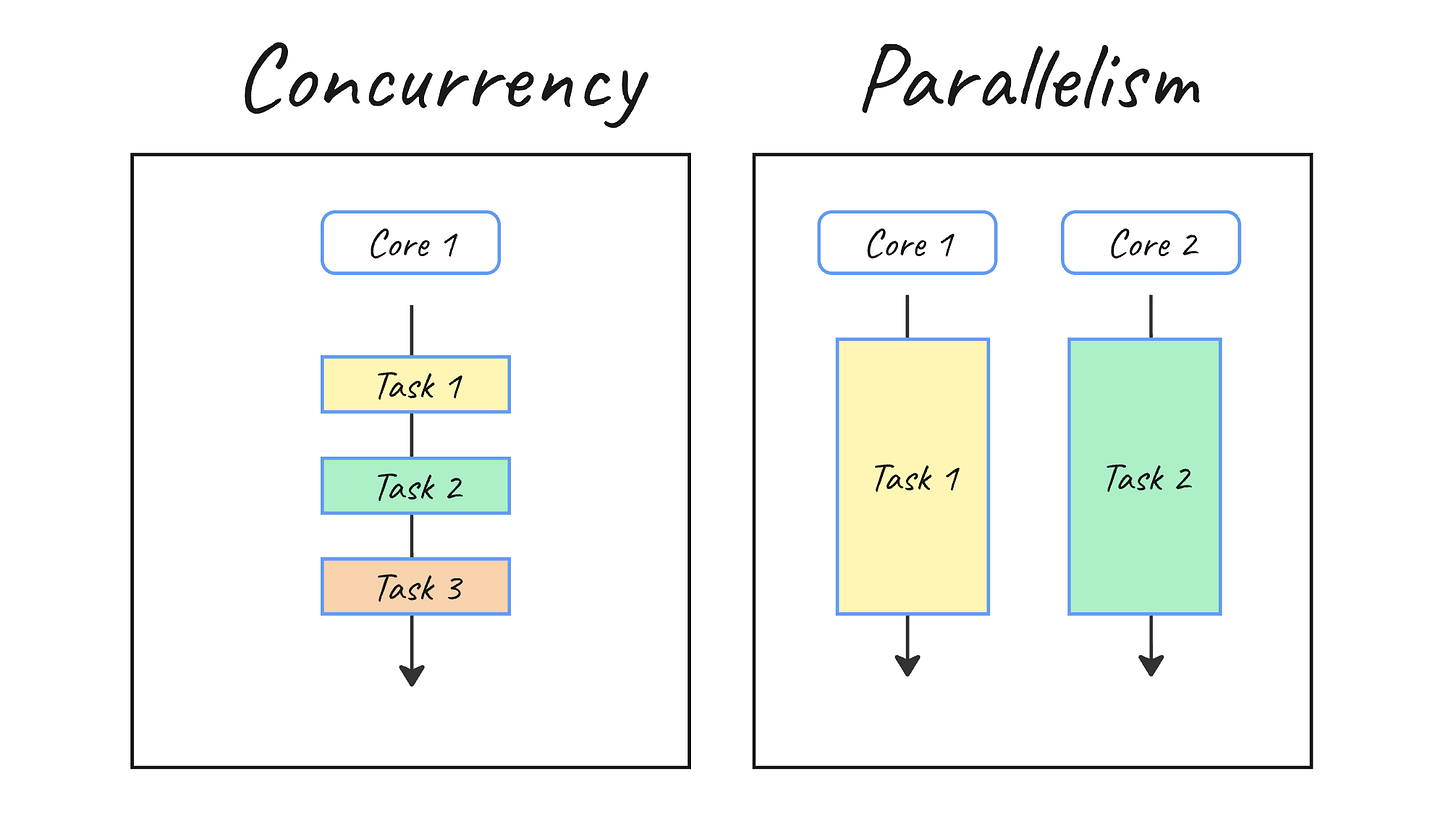Concurrency vs Parallelism: The Cleanest Explanation You’ll Ever Need
What they actually mean and how to answer better in interviews
This is a paid newsletter, and only 30% of the article is accessible to free subscribers
If you’re not already a paid subscriber, consider upgrading to get maximum benefits and put your career growth on steroids
Last week, a mentee DM’d me:
Bro, the interviewer asked me to explain concurrency and parallelism, and I explained that both meant similar things and were used for parallel execution
If you felt that was the right answer, pull up a chair
Because today, we’re breaking this down like two friends solving a problem on a whiteboard at 1 AM
No jargon
No textbook definitions
Just clarity that sticks
Let’s go
The Real Problem
Most engineers confuse concurrency and parallelism because:
Both involve doing more than one thing
Both have something to do with performance
Both sound similar in interviews
Both are used interchangeably online
Both involve concurrency
But they are not the same.
And if you mix them up in an interview, it gives the signal that your fundamentals are not clear
So let’s fix that
The simplest analogy ever
Imagine you are cooking dinner
Concurrency
You are alone in the kitchen
You chop onions for a bit
Then stir the curry
Then check the rice
Then flip the chapati
Then come back to chopping
You switch between tasks
Everything moves forward, but not at the same moment
This is concurrency
Parallelism
Now, imagine you get help
You chop onions
Your friend stirs the curry
Both tasks move forward at the same time.
This is parallelism
That’s it
That’s the whole difference
Concurrency is switching
Parallelism is real simultaneous action


